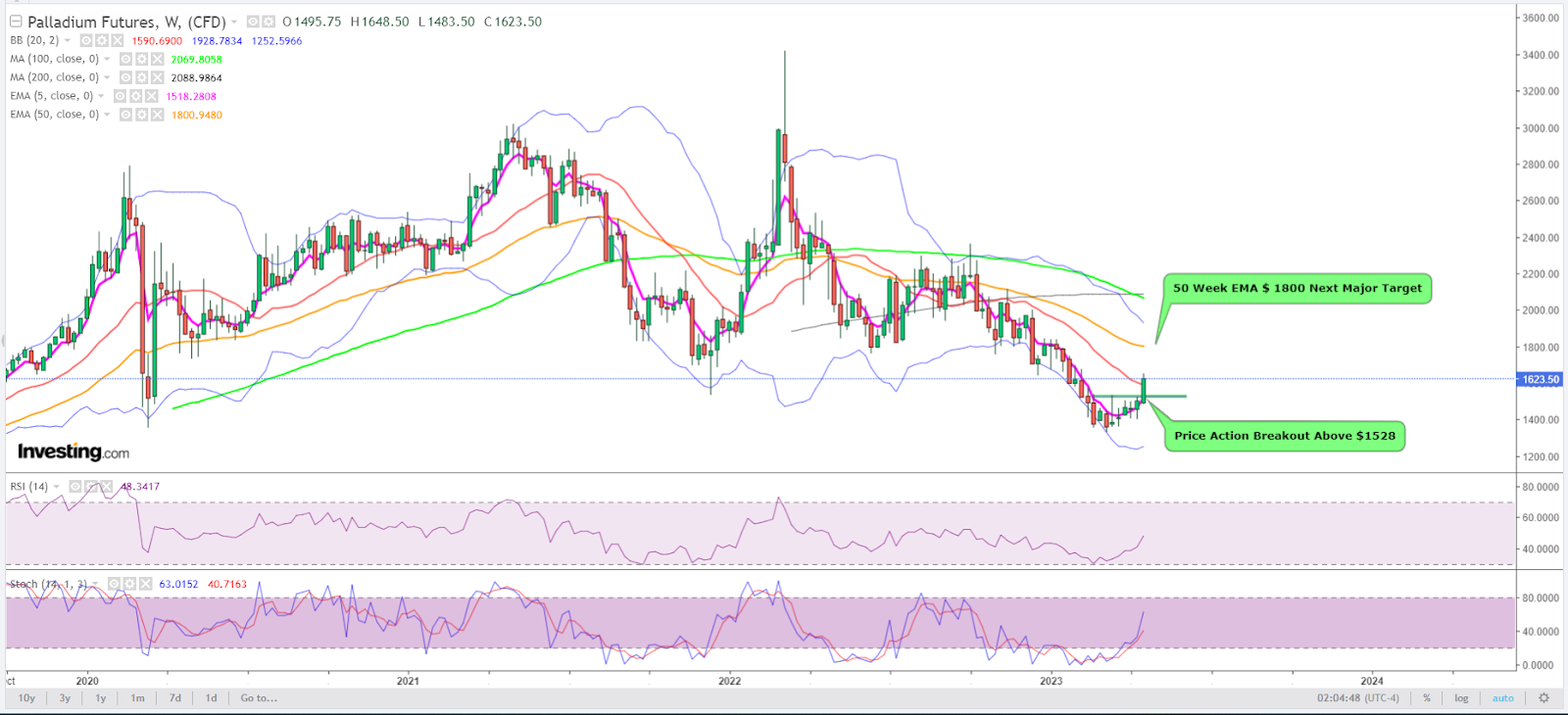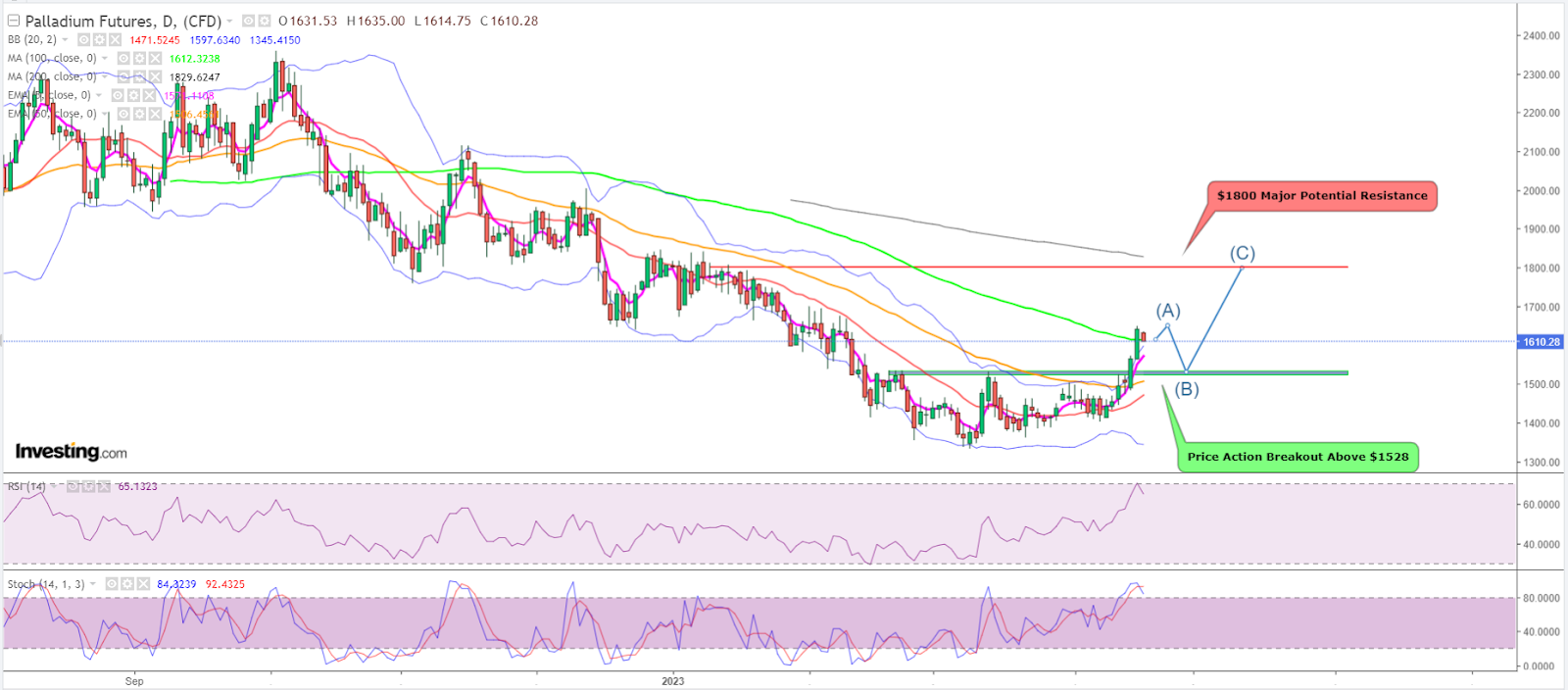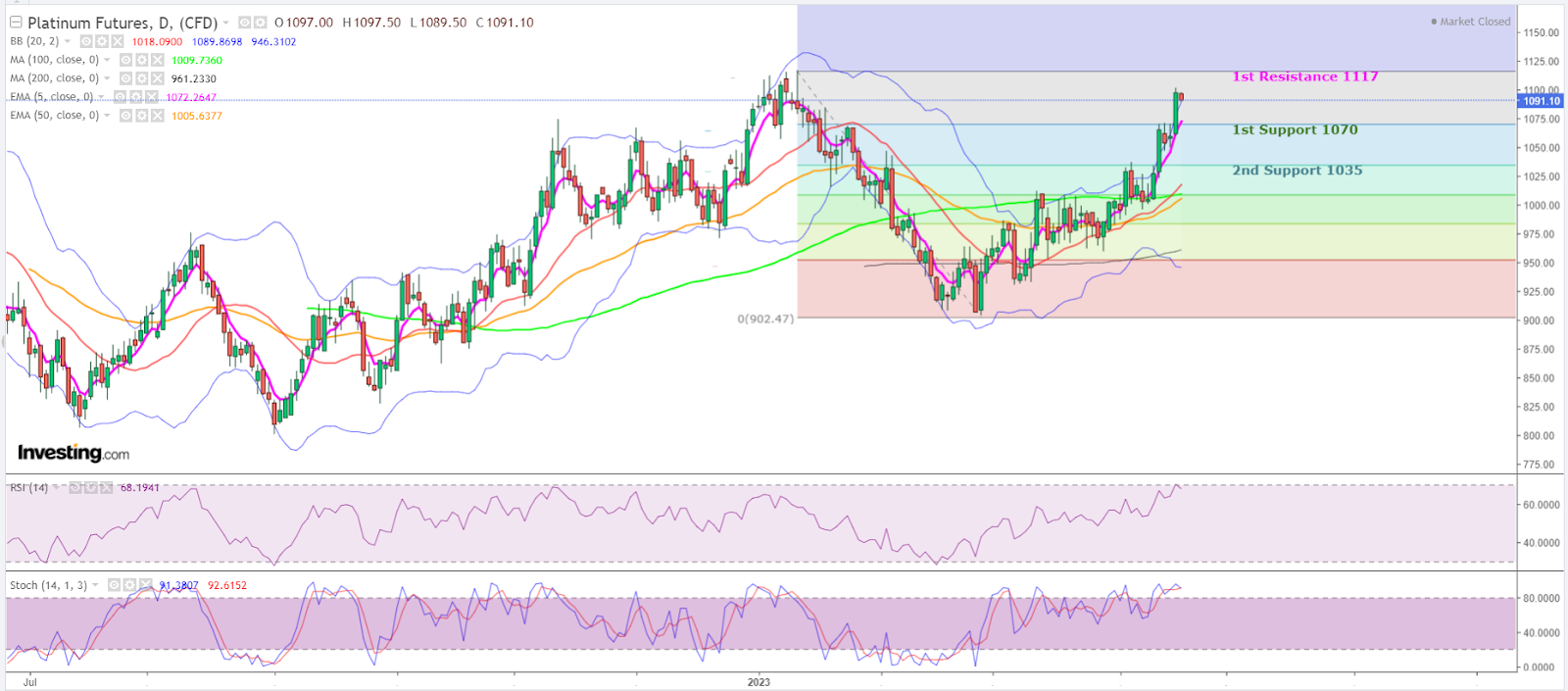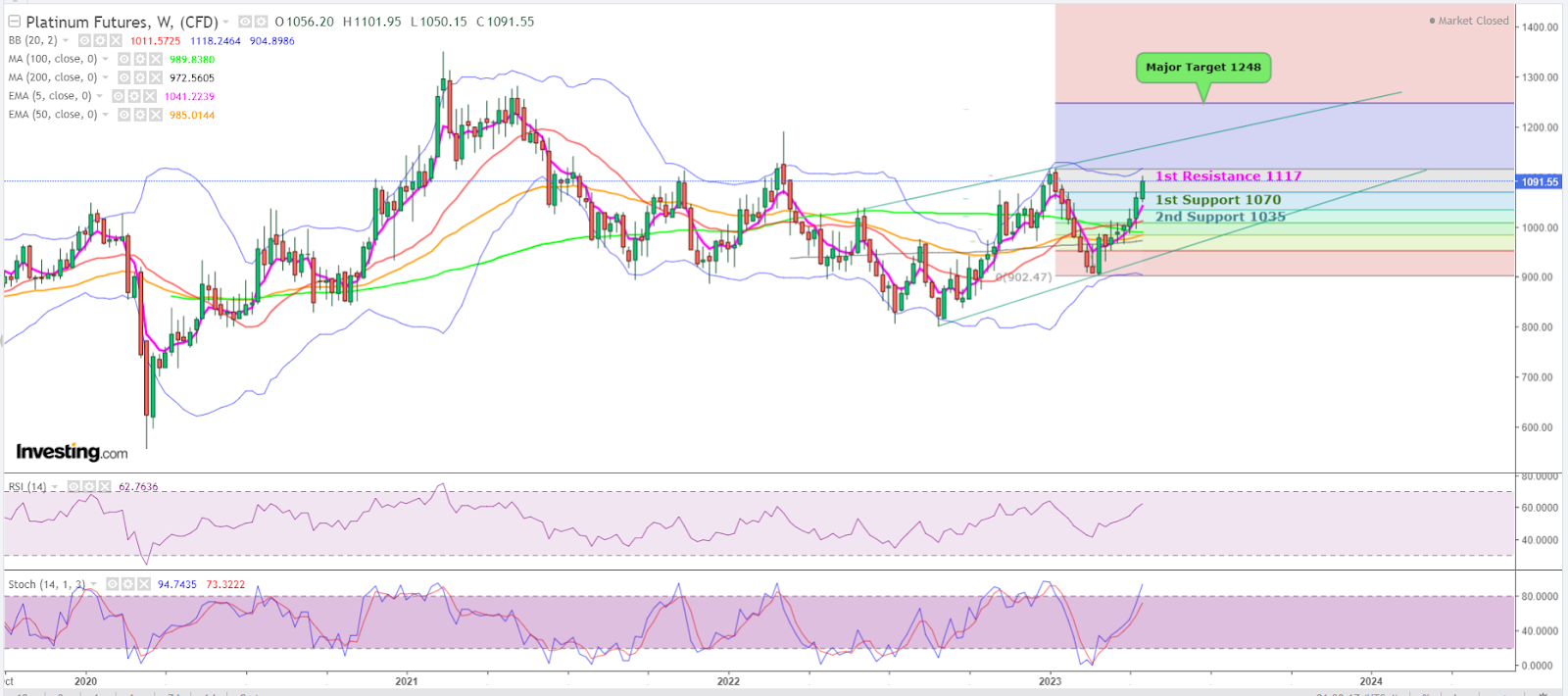- PGMs rally on dollar’s recent lows, China’s better-than-expected Q1 GDP
- Dollar, however, up now on Fed speculation; spotty China factory data weighs
- Technically PGMs look solid; palladium could reach $1,800, platinum near $1,250
One-year lows in the dollar and China’s above-average first quarter GDP growth have sharply boosted prices of Platinum Group Metals or PGMs — a commodities bucket comprising specialty metals that the automobile industry relies on for emissions refining.
The question is where do platinum and palladium, which lead this bucket, go from here.
At the time of writing, the Dollar Index Futures, which hit 100.42 on April 14, was out of its 12-month trough, hovering above 101.50. U.S. bond yields, led by the return on the benchmark U.S. 10-year Treasury note, also hit one-year lows at 3.253 more than a week ago but have rebounded since to 3.581.
The dollar and bond yields are seeing fresh upside as focus returns to the Federal Reserve and its anticipated rate hike on May 3.
Hawkish signals from Fed officials and signs of some resilience in the U.S. economy despite fears of a recession have left most investors in a state of uncertainty. Fed Governors Christopher Waller and Lisa Cook are also set to speak later this week -- what could provide more upside for the dollar and yields.
Rising interest rates bode poorly for Asian markets as higher U.S. bond yields sap the appeal of risk-heavy assets while also limiting flows of foreign capital into the region.
China’s gross domestic product expanded at an annual rate of 4.5% between January and March — surpassing the 4.0% forecast for the first quarter and the Q4 rate of 2.9% — in response to policymakers’ actions to bolster growth following the end of strict COVID-19 curbs in December.
While the GDP data did indicate that Chinese economic recovery was on track, signs of persistent post-pandemic weakness in the country’s manufacturing sector also told the narrative of an uneven rebound.
China’s leading stock indicators, the Shanghai Shenzhen CSI 300 and Shanghai Composite indexes, both fell in Wednesday’s early trade as initial optimism over the GDP data ran out of steam.
Context
This has been branded as the year of specialty metals, and PGMs are somewhat living up to the tag after a rocky start.
Of the two auto catalyst metals, palladium is more valued than platinum for its use in gasoline-powered cars, which dominate the global automobile market.
Palladium hit a record high of $3,440.76 an ounce in New York futures trade in March 2022. That rally came after major producer Russia invaded Ukraine and disrupted the flow of not just palladium but other key commodities. Western sanctions against Moscow have contributed to deepening the trend.
At Wednesday’s pre-open in New York, most active platinum for July delivery on New York’s Comex hovered at above $1,625.
In the prior session, it crested at $1,649, a high not seen since palladium’s most-active contract on Comex hit $1,674.50 on February 3. Prior to that peak, a surfeit of economic worries forced palladium down to $1,333 on March 3 — a trough not witnessed since the June 2019 low of $1,305.20.
Platinum hovered at above $1,085 an ounce at Wednesday’s pre-open in New York. In the previous session, it hit a three-month high of $1,101.95. Prior to that peak, platinum sank to $904.10 on February 24, for a low unseen at the $875 level it hit on October 14.
Outlook
Palladium has established strong support at $1,528, a breakout point that has carried the premier auto-catalyst metal towards Tuesday’s peak, just shy of $1,650, noted Sunil Kumar Dixit, chief technical strategist at SKCharting.com.

Charts by SKCharting.com, with data powered by Investing.com
Dixit adds:
“The $1,528 is also the zone which has accelerated palladium’s upward move towards the Weekly Middle Bollinger Band of $1,590. Stability above this line can support further upside, targeting the next major resistance at the 50-week Exponential Moving Average, or EMA, at $1,800.”
Dixit said a short term pull back towards the 5-Day EMA dynamically positioned at $1,570 could be witnessed followed by a sharper drop to a retest of the $1,528 breakout zone and the 50-day EMA of $1,507. Adds the technical strategist:
Adds the technical strategist:
“A resumption of the uptrend in palladium will require a strong breakout again above $1,528. Buyers are likely to resurface at this major support area. The broad outlook for palladium remains bullish so long as the 100 Day Simple Moving Average, or SMA, of $1,612 remains intact with the day closing above this zone.”
In platinum’s case, it completed a bearish seven-week streak between Jan. 6 and Feb. 17 that led to the current six-week upward wave that began on March 10.
“This upward correction is likely to lead the current impulsive wave in platinum towards a major target of $1,248 in mid term, said Dixit.
He noted that over the short term, the swing high of $1,117 may be an immediate resistance for platinum, while the 5-Day EMA dynamically positioned at $1,071 appeared as immediate support, below which further consolidation could push prices towards the horizontal support of $1,035.
“The short term trend for platinum may witness sideways trades though the 50-Day EMA of $1,005 and the Daily Middle Bollinger Band of $1018 crossing over the 100 Day Simple Moving Average of $1,010. This creates a bullish structure which adds affirmation to platinum’s mid-term strength.”
Disclaimer: The content of this article is purely to educate and inform and does not in any way represent an inducement or recommendation to buy or sell any commodity or its related securities. The author Barani Krishnan does not hold a position in the commodities and securities he writes about. He typically uses a range of views outside his own to bring diversity to his analysis of any market. For neutrality, he sometimes presents contrarian views and market variables.

